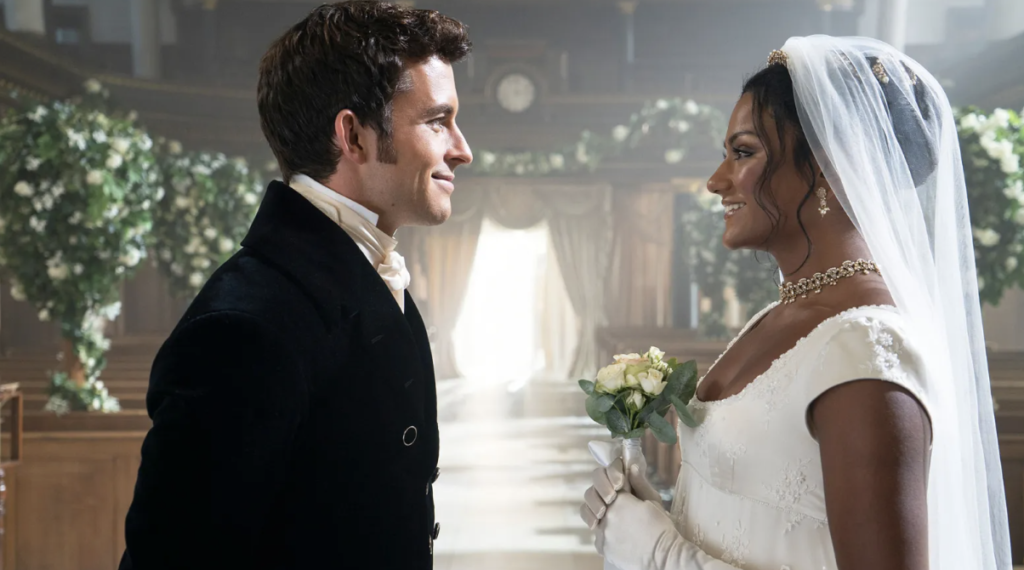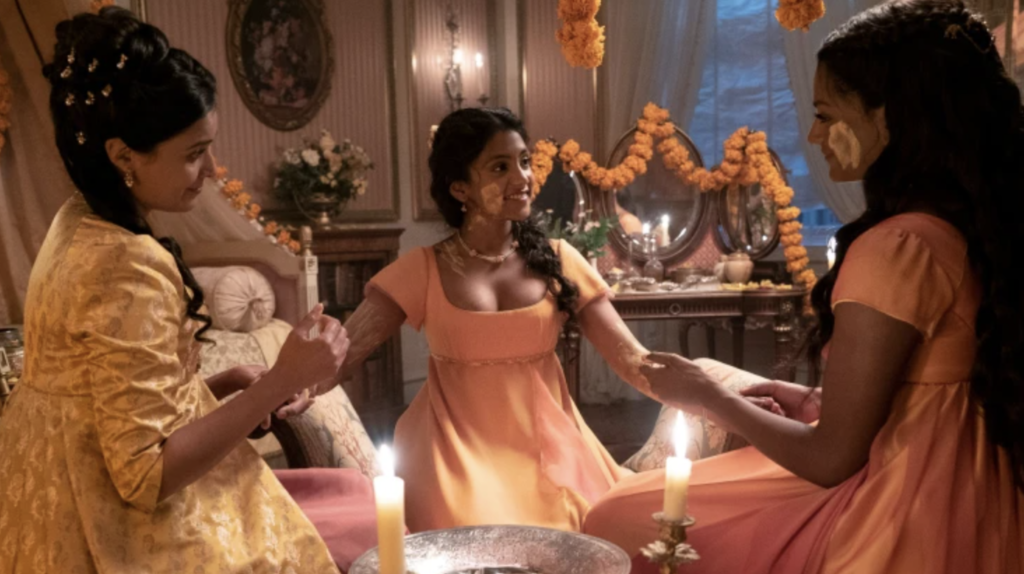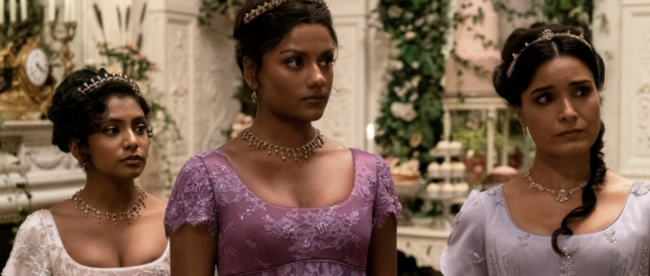Diversity in Period Dramas! Finally!
By: Avani Sethi and Anya Patri
People of color can rarely be seen in period shows and movies with the excuse that it would be historically inaccurate, but season 2 of Bridgerton has blown this preconceived notion out of the water with its colorblind casting and cultural appreciation.
Bridgerton, which became Netflix’s most popular English language in under a week from the release of the second season, is a show both praised and criticized for its diverse cast. The first season consisted of mainly Black and White actors, with maybe the occasional South or East-Asian with one line. But, in the second season, the romantic lead is an Indian woman—Ms. Kathani Sharma; and we also get to see her mother and sister play important roles throughout the season. I, for one, was finally glad to see someone who looked like me finally playing the main role, with a well-developed character and opinions. It was really nice to see an Indian person on screen not play the ever-so-typical undesirable archetype, and especially fun to see an Indian person in a romantic period drama.

When it came out in early 2021, Bridgerton’s first season faced criticism for its diversity and colorblind casting. Any characters who were not either Black or White were pushed to the background and given little to no screen time or speaking lines. The colorblind casting in respect to a mainly Black and White casting the show was praised for also led to a few negative opinions online, as there was a lazy explanation for race in society. Race is one of these outliers, as the high society of the time was predominantly white.
If we set historical accuracy aside, however, the second season was significantly more diverse than the first and provided a better background for the POC characters. The Sharmas came to London from India, which explains their presence in the story. They also take center stage in a love triangle with Anthony Bridgerton, showing how Bridgerton’s season 2 has learned from its first season controversies by including POC three-dimensional characters in the spotlight.
For shows like this where historical accuracy is thrown out the window, it is the perfect opportunity for groups that are often inaccurately represented in the media to take center stage. Season 2 organically included many nods to Indian culture and traditions, like Kate and Edwina’s wedding preparations. The Sharma’s preparations depict the application of Haldi to the bride’s body. Haldi is a yellow paste that is supposed to grant the new bride prosperity and good luck in her marriage and is commonly used to prepare for new weddings. The inclusion of this detail, even though it does not prominently feature throughout the season, provides an appreciative view of traditional Indian culture. This scene is relatable for Indian families everywhere, as it is so similar to the wedding ceremonies of friends and family members we have grown up experiencing. Additionally, we got to see the use of the term didi, which means “older sister” in Hindi and many other Indian language. To see this represented in the media is a huge step for Hollywood and Indian representation in film.

Growing up on American media, I rarely ever see people of color—representing the demographics we live in, in the fantasy, romance, and period drama genres. In other genres, sure we had Ravi in “Jessi,” and Kelly Kapoor in “The Office,” and Raj from “The Big Bang Theory,” but they were all very stereotyped characters. It was nice to see a—almost alternate reality—of just lighthearted fantasy, romance, and comedy. This season of Bridgerton was a nice respite from the usual improper representation South-East Asians receive in media and it was fun to temporarily forget about the generational trauma associated with race in media.

